
The SAFe Roadmap: Showing the initial steps of moving from ad hoc agile to a structured agile framework for an organization
Source: Scaled Agile’s “Download the implementation roadmap” 8.5×11 poster
New frameworks are like climbing a mountain – the larger view encompasses rather than rejects the more restricted view.
Albert Einstein 1
In this second of two articles about “How To Adopt Agile Business Practices” we conduct a SAFe 5.0 Flyby, to provide you a high-level perspective- what we call “clearing the chart”- to dispel some of the SAFe complexity. A perspective we did not easily find in Scaled Agile’s training and publications. Paraphrasing Einstein a bit, we are going to provide the mountain-top view of the framework while embracing the more restrictive views- in a flyby.
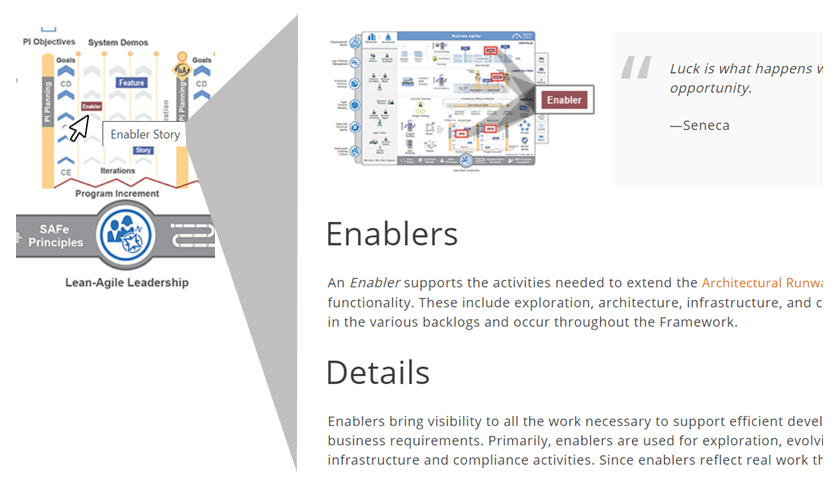
Before you read any further…
You should know all components of Scaled Agile’s SAFe 5.0 are not only shown on the “Big Picture” graphic (Click here to go to the Full SAFe configuration- The Big Picture), where each component (enabler story shown here) has additional information (e.g., definition, description and links) available to everyone- no paywall. Just hover over any component and you can click down into more detail.
Our point of view for an enterprise, scalable agile methodology is best met by Scaled Agile’s Structured Agile Framework (SAFe).
If you haven’t already done so, you may want to read our opening article focused on an abridged view of Basic Concepts of SAFe’s Lean-Agile methodology. Click here to read our first article of the series focused on a Lean-Agile mindset.
We broke our point of view into two parts, because the “How To Adopt Agile Business Practices” is so broad and comprehensive.
- Part 1 of 2: Basic Concepts, founded in familiar concepts, but with SAFe’s unique spin on both of lean and agile as seen through NextForge’s general management business perspective.
- Part 2 of 2: Scaled Agile Framework- A SAFe 5.0 Flyby– (this article) gives you a sense of the breadth and depth of coverage, including our perspective on how to think about the extensive number of elements (more than 100 in list form, mapped into 7 groups to ease understanding) of the SAFe framework as a whole- clearing the “Big Picture”- beyond what is covered in some introductory SAFe training courses.
How we think about the SAFe “Big Picture”
The organizing concept of SAFe’s Big Picture can be a bit overwhelming. It has an entire methodology represented in 8.5 x 11! And, even if you zoom in, it is helpful to keep in mind the context of the specific element you are researching.
The following is our flyby2 of what we see as seven distinct areas or groups of the SAFe Big Picture’s organizing concept. We have keyed the groups to letters “A” through “G” in the following graphic. Note: We are consistent with the SAFe moniker on areas they have named; and the number in the parenthetical indicate the number of sub-components defining the next level of an area.
- CORE COMPETENCIES (7)
These competencies are used in combinations to execute specific configurations
Note: Lean-Agile Leadership is included in both core competency and foundational groups - FOUNDATION [CONCEPTS and TOOLS] (6)
Components of this group support all configurations
Note: Lean-Agile Leadership is included in both core competency and foundational groups - SPANNING PALETTE (8)
The roles and artifacts in the spanning palette are used in combinations to execute the work of specific teams and configurations
horizonal slices
- CONFIGURATION
The various configurations represent the scaled methodology depending on the scope of the value to be added with ESSENTIAL the smallest, least sophisticated and FULL being all inclusive- ESSENTIAL CONFIGURATION (basic building block)
- LARGE SOLUTION CONFIRGURATION (large + essential)
- PORTFOLIO CONFIGURATION (portfolio + essential)
- FULL CONFIGURATION (portfolio + large + essential)
vertical slices
- AGILE TEAMS (Roles)*
Specific roles are relevant to their graphically connected configuration - CONCEPTS*
These key concepts are relevant to their graphically connected configuration - EVENTS & ARTIFACTS (Process)*
The structures, artifacts and processes are relevant to their graphically connected configuration
* indicates a grouping and group name defined through NextForge analysis
Want more information in a traditional format?
Scaled Agile, Inc. have pulled together a summary of the narrative available online in a just recently published book (2020). The book includes descriptions of key concepts and tools supporting the various elements of the framework, including graphical connections back to the “Big Picture,” in 296 pages.
If you are in early stages of considering SAFe, or even if you are certified, we recommend this book as a handy reference to a comprehensive view of SAFe 5.0.
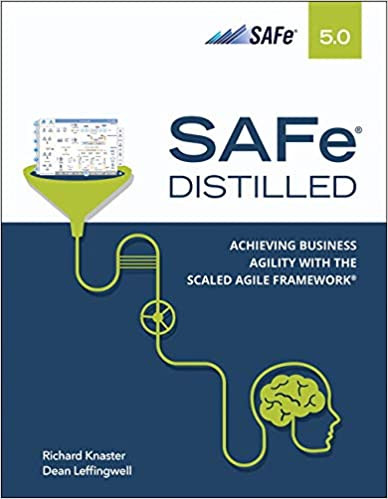
Closing thoughts
Click here to read about the underlying conceptual Lean-Agile framework presented in the first article of this two part series “How To Adopt Agile Business Practices: Basic Concepts.”
This article presents the framework through a flyby of the details of the comprehensive, scalable framework applicable to any level of agile business practices maturity from ad hoc to enterprise level. SAFe 5.0 is a great resource to enable your organization to be more agile in “the way we do things around here.”
The following appendix is abridged and is only intended to give you a “flyby” view into the comprehensiveness (more than 100 elements in this list view) of the SAFe framework to complement the SAFe Big Picture seven areas/groups “A” through “G” graphically identified earlier in this point of view. Many of these components will feel familiar to you, while the advantage of SAFe is they are all integrated into a systemic whole.
APPENDIX
Continuing with our flyby theme, this appendix provides a list based outline of more than 100 elements of the Scaled Agile Framework (SAFe 5.0) viewed in 7 groups based on similar content, artifacts and concepts with occasional, but not consistent levels of description. We have attempted to include in this flyby a listing of all elements shown with the SAFe 5.0 “Big Picture.”
Breaking Down the SAFe 5.0 “Big Picture” (with a few notes here and there)
A. Core Competencies (7 each)
Core competencies are also the components referred to as the “Overview”
strategic
- A.1. Lean-Agile Leadership (Also a Foundational Element)
Model desired behaviors; Align mindset, words and actions to Lean-Agile values & principles; Actively lead the change and guide others to the new way of working - A.2. Team and technical agility
High performing, cross-functional agile teams; Business & tech teams build business solutions; Quality business solutions delight customers - A.3. Agile product [result/solution] delivery
Customer-centric product strategy; Develop a cadence, and release on demand; continuously explore, integrate, deploy and innovate - A.4. Enterprise solution delivery
Apply lean engineering to build systems; Coordinate and align the full supply chain; Continually evolve live systems - tactical
- A.5. Lean portfolio management
Align strategy, funding and execution; Optimize operations across the portfolio; Lightweight governance empowers decentralized decision making - A.6. Organizational agility
Create an enterprise-wide, lean-agile mindset; Lead out business operations; Respond quickly to opportunities and threats - A.7. Continuous learning culture
Everyone in the organization learns and grows together; Exploration and creativity are a part of the organization’s DNA; Continuously improving solutions, services and processes is everybody’s responsibility
B. Foundation (6 each)
Principles, values, mindset, leadership, roles & implementation guidance to drive change
B.1. Lean-Agile Leaders (Also a Core Competency; See Core Competency for more components of a definition)
B.2. Core Values
B.2.1. Alignment
B.2.2. Built-in Quality
B.2.3. Transparency
B.2.4. Program Execution
B.3. Lean-Agile Mindset
B.3.1. Growth mindset
B.3.2. SAFe house of lean
B.3.2.1 The Goal: Value
Achieved through 4 pillars of:
o Respect for people & Culture
o Flow
o Innovation
o Relentless improvement
B3.2.2 Built on upon a Foundation of: Lean-Agile Leadership
B.4. Safe Principles3 (10)
B.4.1. Take an economic view
Deliver early and often; Apply a comprehensive economic framework;
4 Elements 1) Operate within lean budgets and guardrails, 2) Understand economic tradeoffs, 3) leverage suppliers, and 4) sequence jobs for maximum benefit
B.4.2. Apply systems thinking
The solution is a system; The enterprise building the system is a system too; Understand and optimize the full value stream; Only management can change the system
B.4.3. Assume variability; Preserve options
With set-based design with learning points, to winnow options, versus point-based design
B.4.4. Build incrementally with fast, integrated learning cycles
Integration points create knowledge from uncertainty; integration points occur by intent; faster learning through faster cycles (PDCA)
B.4.5. Base milestones on objective evaluation of working systems
Base milestones on objective evidence
B.4.6. Visualize and limit WIP, reduce batch sizes and manage queue lengths
Visualize & limit WIP; Reduce batch size; Manage queue lengths (avoid: longer cycle times, increased risk, increased variability, lower motivation)
B.4.7. Apply cadence; Synchronize with cross-domain planning
Align developmental cadence; Synchronize with cross-domain planning
B.4.8. Unlock intrinsic notification of knowledge workers
Leverage systems thinking; Understand the role of compensation; Create an environment of mutual influence; Provide autonomy with purpose, mission and minimum possible constraints (Pink: autonomy, mastery, purpose)
B.4.9. Decentralize decision-making
Centralize: infrequent, long-lasting, provide significant economies of scale.
Decentralize: frequent, time-critical, requires local information (everything else)
B.4.10. Organize around value
Understand the value flow; Realize value streams with agile teams and trains; Reorganize around value
B.5. Implementation Roadmap (12 steps)
B.5.1. Reaching the Tipping Point
B.5.2. Train Lean-Agile Change Agents
B.5.3. Train Executives, Managers, and Leaders
B.5.4. Create a Lean-Agile Center of Excellence
B.5.5. Identify Value Streams and ARTs
B.5.6. Create the Implementation Plan
B.5.7. Prepare for ART Launch
B.5.8. Train Teams and Launch the ART
B.5.9. Coach ART Execution
B.5.10. Launch More ARTs and Value Streams
B.5.11. Extend to the Portfolio
B.5.12. Accelerate
B.6. SAFe Program Consultants
change agents who combine their technical knowledge of SAFe with an intrinsic motivation to improve the company’s software and systems development processes
C. Spanning Palette (8)
The Spanning Palette contains various roles and artifacts that may apply to a specific team, program, large solution, or portfolio context
C.1. Vision
C.2. Roadmap
C.3. Milestones
C.4. Shared Services
C.5. Community of Practice
C.6. System Team
C.7. Lean UX [user experience]
C.8. Metrics
D. SAFe Configurations (4)
D.1. Essential SAFe
The most basic configuration of the framework and it provides the minimal elements necessary to be successful with SAFe
D.2. Large Solution SAFe
Is for enterprises that are building large and complex solutions, which do not require the constructs of the portfolio level
D.3. Portfolio SAFe
Provides portfolio strategy and investment funding, Agile Portfolio operations, and Lean Governance. Aligns strategy with execution and organizes solution development around the flow of value
D.4. Full SAFe
Represents the most comprehensive configuration. It supports building large, integrated solutions that typically require hundreds of people or more to develop and maintain
E. Agile Teams & Roles (12)
E.1. Agile Team: Members
E.2. Agile Team: Scrum Master
E.3. Agile Team: Product Owner
E.4. Agile Release Train: Release Train Engineer
E.5. Agile Release Train: System Architecture/Engineering
E.6. Agile Release Train: Product Management
E.7. Essential: Business Owners
E.8. Solution Train: Solution Train Engineer
E.9. Solution Train: Solution Architecture/Engineering
E.10. Solution Train: Solution Management
E.11. Epic: Owners
E.12. Enterprise: Architect
F. Concepts
F.1. Kanban
F.2. Scrum
F.3. Team Backlog
F.4. Program Backlog
F.5. Customer Centricity
F.6. Design thinking
F.7. Model-Based Systems Engineering (MBSE)
is the practice of developing a set of related system models that help define, design, analyze, and document the system under development. These models provide an efficient way to virtually prototype, explore, and communicate system aspects, while significantly reducing or eliminating dependence on traditional documents.
F.8. Set-Based Design (SBD)
is a practice that keeps requirements and design options flexible for as long as possible during the development process. Instead of choosing a single point solution upfront, SBD identifies and simultaneously explores multiple options, eliminating poorer choices over time. It enhances flexibility in the design process by committing to technical solutions only after validating assumptions, which produces better economic results. [Note: SBD pairs nicely with the project management concept of “Progressive Elaboration4” where we will know more then than we know now]
F.9. Solution Backlog
F.10. Weighted Shortest Job First (WSJF)
F.11. Strategic themes
F.12. Portfolio Vision
F.13. Portfolio Backlog; Lean Budgets; Guardrails
G. Events and Artifacts (Process)
G.1. Program Increment Objectives
G.2. Program Increment Planning
G.3. Program Increment
[Note: Program Increments are composed of a series of iterations; a typical series kicks off with program increment (PI) planning, followed by 5 iterations including the last iteration of the series designated as an innovation and planning iteration (IP); the IP iteration serves several functions, including contingency for the Program Increment]
G.4. Iteration Planning
G.5. Iteration Execution (a.k.a. agile sprint)
G.6. Plan, Do, Check, Adjust (PDCA)
G.7. Daily Scrum
• What did you do yesterday?
• What will you do today?
• Are there any impediments in your way?
G.8. Iteration Retrospective
G.9. Feature
a service that fulfills a stakeholder need. Each feature includes a benefit hypothesis and acceptance criteria and is sized or split as necessary to be delivered by a single Agile Release Train (ART) in a Program Increment (PI).
G.10. Capability
a higher-level solution behavior that typically spans multiple ARTs. Capabilities are sized and split into multiple features to facilitate their implementation in a single PI.
G.11. Stories
short descriptions of a small piece of desired functionality, written in the user’s language. Agile Teams implement small, vertical slices of system functionality and are sized so they can be completed in a single Iteration.
primary artifact used to define system behavior in Agile. They are short, simple descriptions of functionality usually told from the user’s perspective and written in their language. Each one is intended to enable the implementation of a small, vertical slice of system behavior that supports incremental development.
provide just enough information for both business and technical people to understand the intent. Details are deferred until the story is ready to be implemented. Through acceptance criteria and acceptance tests, stories get more specific, helping to ensure system quality.
G.12. Enabler
supports the activities needed to extend the Architectural Runway to provide future business functionality
G.13. Weighted Shortest Job First (WSJF)
G.14. Agile Release Train
is a long-lived team of Agile teams, which, along with other stakeholders, incrementally develops, delivers and, where applicable operates, one or more solutions in a value stream.
Creates a continuous delivery pipeline:
“Continuous exploration, Continuous integration, Continuous Deployment” to “Release on demand”
G.15. Built in quality
G.16. DevOps
G.17. Solution and Solution Context
G.18. Capability
higher-level solution (above Feature) behavior that typically spans multiple ARTs. Capabilities are sized and split into multiple features to facilitate their implementation in a single PI
G.19. Solutions Train
the organizational construct used to build large and complex Solutions that require the coordination of multiple Agile Release Trains (ARTs), as well as the contributions of Suppliers
G.20. System Demo and Solution Demo
G.21. Epic
container for a significant Solution development initiative that captures the more substantial investments that occur within a portfolio. Due to their considerable scope and impact, epics require the definition of a Minimum Viable Product (MVP) and approval by Lean Portfolio Management (LPM) before implementation
G.22. Value Stream Coordination
defines how to manage dependencies and exploit the opportunities that exist only in the interconnections between value streams
The content summarized above is sourced from various SAFe 5.0 artifacts including the SAFe website and Knaster, et al, SAFe Distilled, Achieving business agility with the scaled agile framework® (Pearson, Addison-Wesley, 2020).
END NOTES
__________________________
- AZ Quotes, https://www.azquotes.com/quote/533483 [cited 1.3.2021]
- Flyby definition “2. a flight of a spacecraft past a celestial body (such as Mars) close enough to obtain scientific data” https://www.merriam-webster.com/dictionary/flyby [internet, cited 12.19.2020]
- For more detailed discussion of the 10 SAFe principles see Knaster, et al, SAFe Distilled, Achieving business agility with the scaled agile framework®, (Pearson, Addison-Wesley, 2020) pages 39-61
- Progressive elaboration is a project management concept relevant to waterfall and agile type projects defined by the Project Management Institute. See Progressive Elaboration https://www.projectmanagement.com/wikis/295452/Progressive-Elaboration [internet cited 12.19.2020].
“Progressive elaboration involves continuously improving and detailing a plan as more detailed and specific information and more accurate estimates become available. Progressive elaboration allows a project management team to define work and manage it to a greater level of detail as the project evolves.
“In agile approaches, progressive elaboration is achieved by short iterations or development cycles with a step of refining the backlog at the beginning of (and sometimes during) an iteration. In iterative projects, rolling wave planning is a common technique of progressive elaboration.

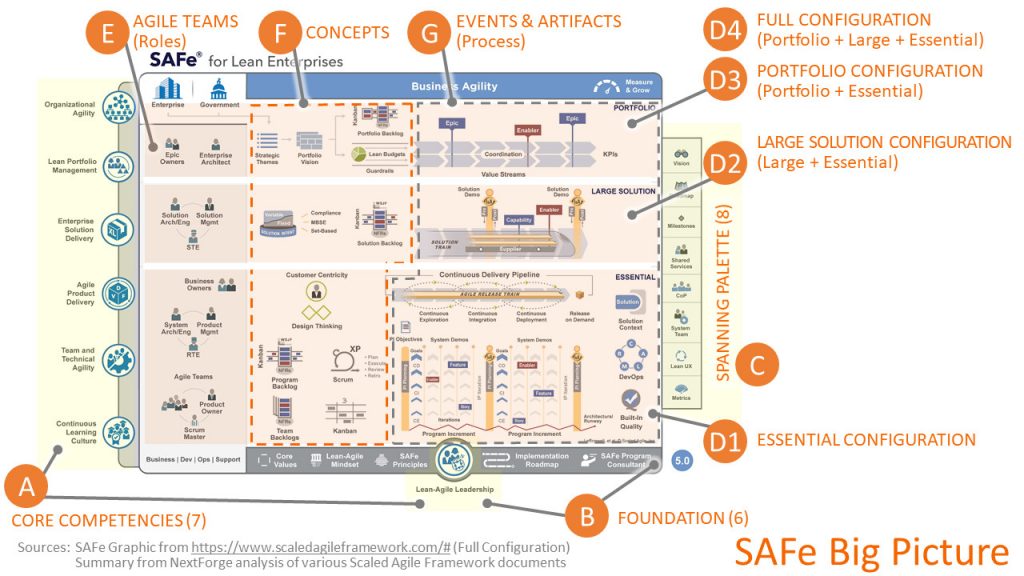

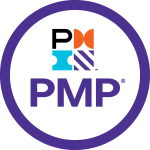
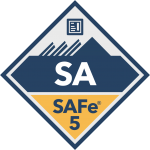
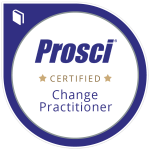

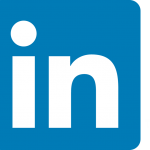

One Response